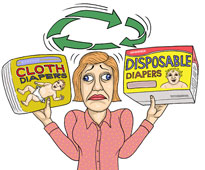I've been using my set of
fabric grocery bags since I made them this summer, but I still kept using the plastic bags from the store for fruits and vegetables. Every time I pulled one off the roll, I thought, "I have
got to make some of these." And then by the time I get home, I'd forget.
I finally made 9 of them this weekend. And they cost me exactly nothing because I reused a sheer curtain that we'd replaced.
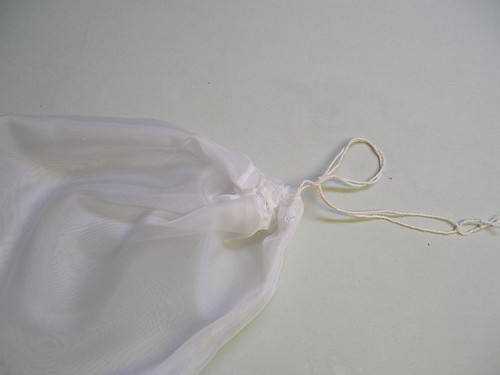
You can either use tulle or sheer fabric, but really I think the sheer is much easier to work with. The only requirement is that they be see through and lightweight. Sometimes they have sheer curtains at the thrift store, just take em home and wash well in hot water. If you can't find those, tulle is probably going to be cheaper. You can get 4 bags out of one yard, which costs 2 bucks.
Also, if you want them to be painfully cute, you can decorate them with some
handmade stamps. I carved up some broccoli and onions special for this project.
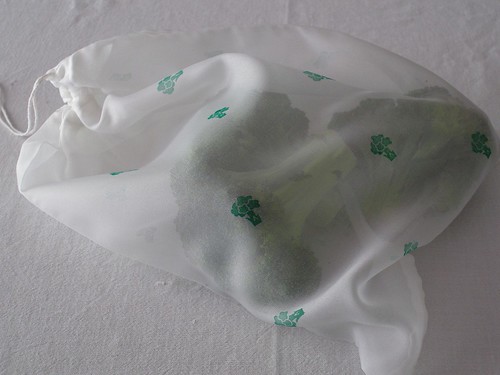
So, on to the directions.
-First, cut the fabric into rectangles that are 17" by 27", which makes a finished bag 15" tall by 13" wide (with double hemming). You can easily make them bigger or smaller, though. (If any of the edges are excessively frayed, cut that off first before cutting to size.)
-Then you need to hem any sides that are not on the
selvedge (finished edge) to keep the whole thing from unraveling over time. You can do it one of two ways, both shown in the picture below. If you need a better explanation of the double hem,
check here. If you use the tulle, don't bother with the hemming, just sew the whole thing with a fairly tight, straight stitch. (Note- I've changed this from the original recommendation of a zigzag because straight stitches work much better on tulle. Sorry, August!)
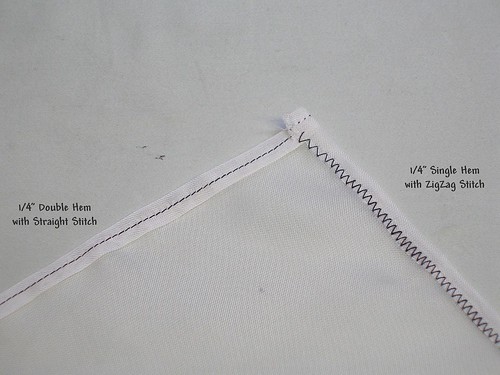
-Next fold in half hamburger-wise (as opposed to hotdog-wise... does anyone else remember this brilliant instruction from elementary school?) and pin. In the picture below, the right side is the bottom of the bag and the left is the top.
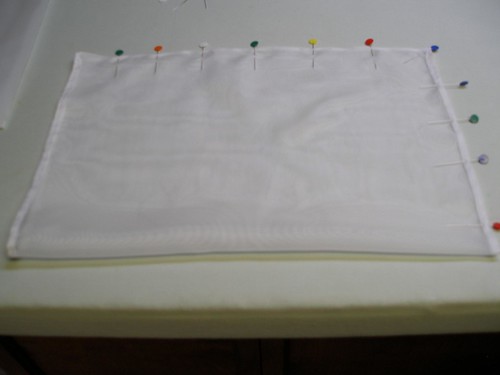
-When you sew the side and bottom, start sewing about an inch down from the corner. Also, it's best to sew where the fabric is doubled up on itself, basically somewhere along the hem.
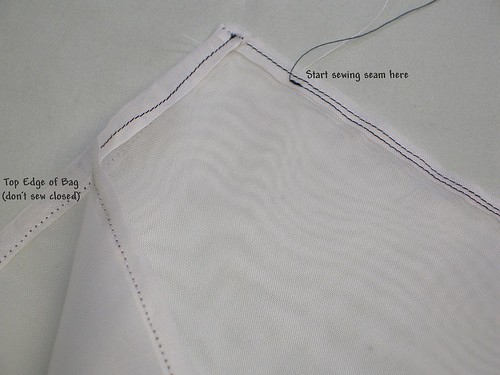
-Once you've sewn the bag, make the channel for the twine by folding down and pinning the top edge like shown.
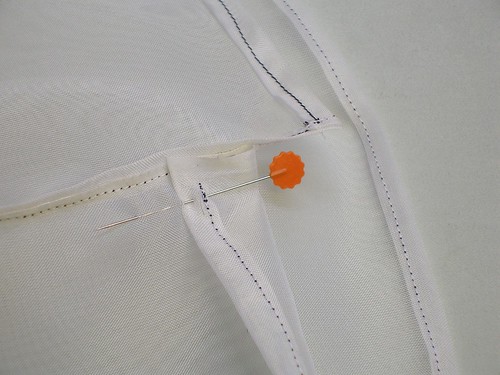
-Start sewing where shown in the picture, folding the fabric evenly down as you go.
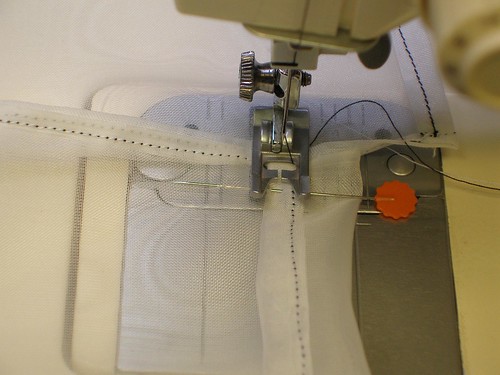
-By the time you've gone all around the top and returned to where you started, you'll have created a channel like this. The openings to the channel are underneath my right finger and thumb (please excuse the paint on my hands, we've been painting Randa's room this week.)
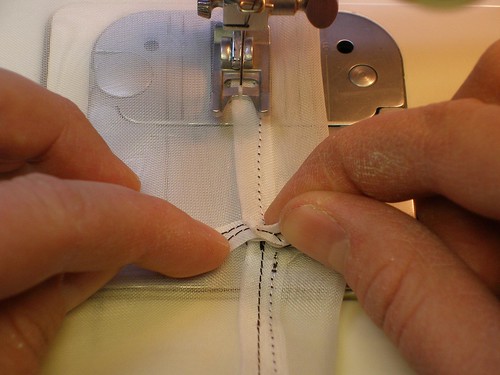
-All you need to do to finish the bag is to tie a knot in some twine, push a safety pin through it and feed it through the channel. Leave about 2 or 3 inches hanging out on each side and tie it in a knot. When you want to close up the bag, just do a slip knot.
Oh, and one more thing. I weighed one bag on the kitchen scale and it's total weight was 0.4 ounces (as compared to the plastic bag which was 0.1 ounces).
That's it.
































